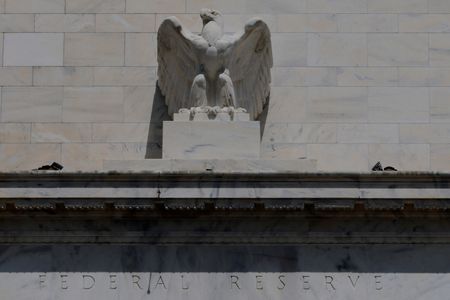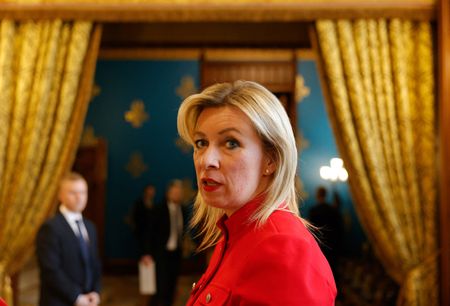By Sara Rossi
LONDON (Reuters) -The U.S. Federal Reserve has delivered its first rate cut since December, diverging from most other major central banks that have kept interest rates unchanged.
The Bank of England kept rates steady on Thursday and the Bank of Japan is expected to follow on Friday, while expectations for further euro zone rate cuts are fading.
Here’s where 10 major central banks stand:
1/ SWITZERLAND
The Swiss National Bank cut its key rate to 0% in June. Investors have pondered whether a return to negative territory is likely, but markets now expect the SNB to hold rates when it meets next Thursday.
Chairman Martin Schlegel reiterated that the bar is high for a return to negative rates, but does not rule out such a move. Inflation holding above the bottom of the SNB’s 0-2% target band in August means traders do not anticipate negative rates soon.
2/ CANADA
The Bank of Canada reduced its key rate to a three-year low of 2.5% on Wednesday, the first cut in six months, citing a weak jobs market and less concern about underlying price pressures.
It paused its easing campaign in March after reducing rates by a total of 225 basis points in nine months, starting in June last year. Markets price in a roughly 40% chance of another cut when the central bank meets again next month.
3/ SWEDEN
Sweden’s Riksbank has also cut rates substantially, despite sticky core inflation, but looks set to remain on hold when it meets next week.
It says that August inflation data were supportive of the Riksbank’s view that price pressures are likely to be temporary.
4/ NEW ZEALAND
Domestic and global growth headwinds could pave the way for the Reserve Bank of New Zealand to cut rates at its October 8 meeting and probably once more by the year’s end, a Reuters poll of economists shows.
The RBNZ cut its policy rate by 25 bps to a three-year low of 3% last month.
5/ EURO ZONE
Euro zone rate setters last week kept their key rate on hold at 2% for a second straight meeting, with ECB chief Christine Lagarde reiterating that the bank remains in a “good place” and said risks to the economy had become more balanced than before.
Markets sense the ECB cycle is at or near an end and price in roughly 12 bps of cuts by next July.
6/ UNITED STATES
Moving in the opposite direction, the Federal Reserve reduced rates on Wednesday and indicated more cuts would follow in October and December to support the jobs market. Fed Chair Jerome Powell said the softening job market was now key for policymakers.
U.S. President Donald Trump, meanwhile, is trying to fire Fed Governor Lisa Cook. New Fed Governor Stephen Miran, sworn in on Tuesday, cast the only dissenting vote – he opted for a bigger 50 bps rate cut.
In total, around 50 bps of Fed cuts are priced in by year-end.
7/ BRITAIN
The Bank of England kept rates unchanged on Thursday. Policymakers voted 7-2 to slow the annual pace at which it unloads the gilts purchased from 2009 and 2021 to 70 billion pounds from 100 billion pounds, broadly in line with analyst expectations.
The BoE last cut rates in August and markets price in a roughly 40% chance of a quarter point move by year-end. Some analysts think a cut is likely in November as growth slows.
8/ AUSTRALIA
The Reserve Bank of Australia has cut rates by 75 bps since February, though strong second-quarter GDP data means markets have pared back bets on more easing.
Traders price in one more 25 bps cut this year, and nearly another two by June 2026. The next meeting is on Sept. 30.
9/ NORWAY
Norway’s central bank cut rates by 25 bps to 4.0% on Thursday, its second reduction of borrowing costs in three months, as expected by analysts.
It added that it would not cut future rates as much as it had thought in June due to an increase in underlying inflation and slower-than-expected growth in the first half.
Markets expect Norges Bank to keep rates on hold for the rest of the year.
10/ JAPAN
The Bank of Japan is almost certain to hold rates at its meeting on Friday amid political uncertainty following Prime Minister Shigeru Ishiba’s resignation.
However, for the sole central bank in tightening mode, a December hike still looks possible. It last raised interest rates in January to their highest level since the 2008 global financial crisis.
Also watch on Friday whether the BOJ reduces its purchases of super-long-dated government bonds.
(Reporting by Sara Rossi; Editing by Dhara Ranasinghe and Joe Bavier)









